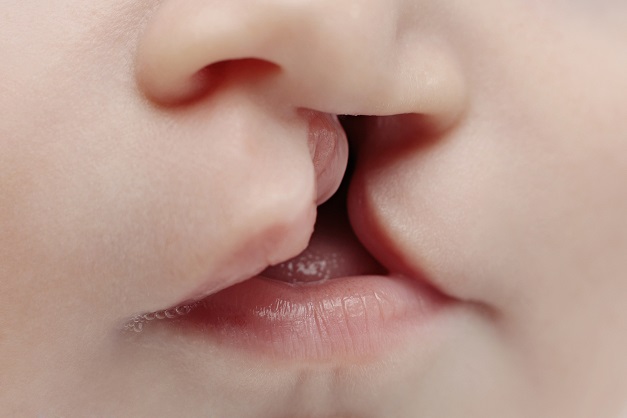
Cleft Palate and Cleft Lip
If your child has a cleft palate or cleft lip, you may be wondering what you can do to help them maintain good oral hygiene. And you would not be alone in your desire to help your little one. This common birth condition is a concern for a lot of other parents, too.
What is Cleft Palate and Cleft Lip?
Cleft palate and cleft lip are openings or splits in the upper lip, the roof of the mouth (palate) or both. Cleft lip and cleft palate result when facial structures that are developing in an unborn baby don’t close completely. The National Institute of Craniofacial Research estimates that 2,650 babies are born with cleft palates each year in the United States. Additionally, 4,440 babies are born with a cleft lip, with or without a cleft palate.
Having a baby born with a cleft can be upsetting, but cleft lip and cleft palate can be corrected. In most babies, a series of surgeries can restore normal function and achieve a more normal appearance with minimal scarring.
What Causes a Cleft?
Several factors may increase the likelihood of a baby developing a cleft lip and cleft palate, including:
- Family History. Parents with a family history of cleft lip or cleft palate face a higher risk of having a baby with a cleft.
- Exposure to certain substances during pregnancy. Cleft lip and cleft palate may be more likely to occur in pregnant women who smoke cigarettes, drink alcohol or take certain medications.
- Having diabetes. There is some evidence that women diagnosed with diabetes before pregnancy may have an increased risk of having a baby with a cleft lip with or without a cleft palate.
- Being obese during pregnancy. There is some evidence that babies born to obese women may have increase risk of cleft lip and palate.
Complications
Children with cleft lip with or without cleft palate face a variety of challenges, depending on the type and severity of the cleft.
- Difficulty feeding. One of the most immediate concerns after birth is feeding. While most babies with cleft lip can breast-feed, a cleft palate may make sucking difficult.
- Ear infections and hearing loss. Babies with cleft palate are especially at risk of developing middle ear fluid and hearing loss.
- Dental problems. If the cleft extends through the upper gum, tooth development may be affected.
- Speech difficulties. Because the palate is used in forming sounds, the development of normal speech can be affected by a cleft palate. Speech may sound too nasal.
- Challenges of coping with medical condition. Children with clefts may face social, emotional and behavioral problems due to differences in appearance and the stress of intensive medical care.
Prevention
After a baby is born with a cleft, parents are understandably concerned about the possibility of having another child with the same condition. While many cases of cleft lip and cleft palate can’t be prevented, consider these steps to increase your understanding or lower your risk:
- Consider genetic counseling. If you have a family history of cleft lip and cleft palate, tell your doctor before you become pregnant. Your doctor may refer you to a genetic counselor who can help determine your risk of having children with cleft lip and cleft palate.
- Take prenatal vitamins. If you’re planning to get pregnant soon, ask your doctor if you should take prenatal vitamins.
- Don’t use tobacco or alcohol. Use of alcohol or tobacco during pregnancy increases the risk of having a baby with a birth defect.
How Can Teeth Be Affected by a Cleft Palate?
Clefts can affect more than just the top and the roof of your child’s mouth – it can also impact the positioning, size, shape, and number of their teeth. Consistent exposure to the air can dry up saliva and allow bacteria to flourish. According to studies performed by the University of Washington, people with this facial difference may have abnormal salivary glands that can adversely affect their oral health, too. Accordingly, people with clefts tend to have a higher than average rate of tooth decay.
What Can You Do to Help Your Child Maintain Good Oral Hygiene?
For children with a cleft lip or palate, practicing good oral hygiene and seeing a dentist for regular checkups is of the utmost importance to ensure a future with healthy teeth. Start brushing early, at least twice a day.
It’s recommended that you schedule your child’s first dental appointment early. Many dentists suggest bringing children with clefts in for a checkup well before their first birthday so they can identify potential issues. Be sure to ask if they have any recommendations on how to best care for your child’s specific needs. If you return regularly for checkups, your dental professional will be able to monitor for any developing tooth decay.
Remember that any time spent with your little one is a chance to have some fun. Happy brushing – you’ve got this!
Leave a reply →
